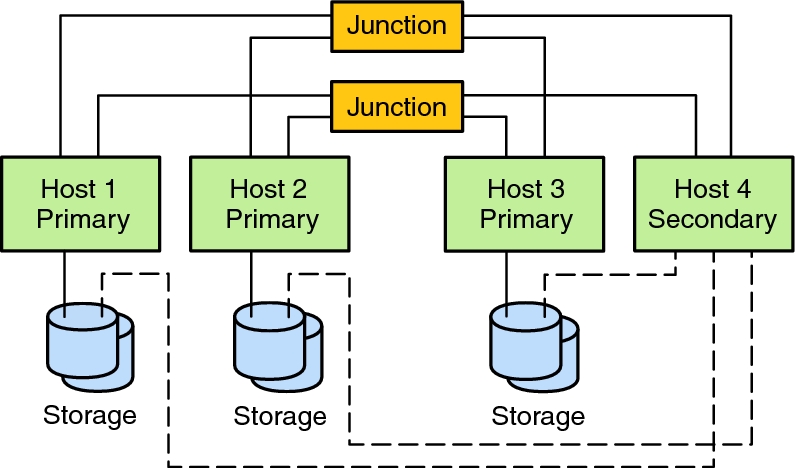SPARC: N+1 (Star) Topology
An N+1 topology includes some number of primary cluster nodes and one secondary node. You do not have to configure the primary nodes and secondary node identically. The primary nodes actively provide application services. The secondary node need not be idle while waiting for a primary node to fail.
The secondary node is the only node in the configuration that is physically connected to all the multihost storage.
If a failure occurs on a primary node, Oracle Solaris Cluster fails over the resources to the secondary node. The secondary node is where the resources function until they are switched back (either automatically or manually) to the primary node.
The secondary node must always have enough excess CPU capacity to handle the load if one of the primary nodes fails.
The following figure illustrates an N+1 configuration.
Figure 2-7 SPARC: N+1 Topology
